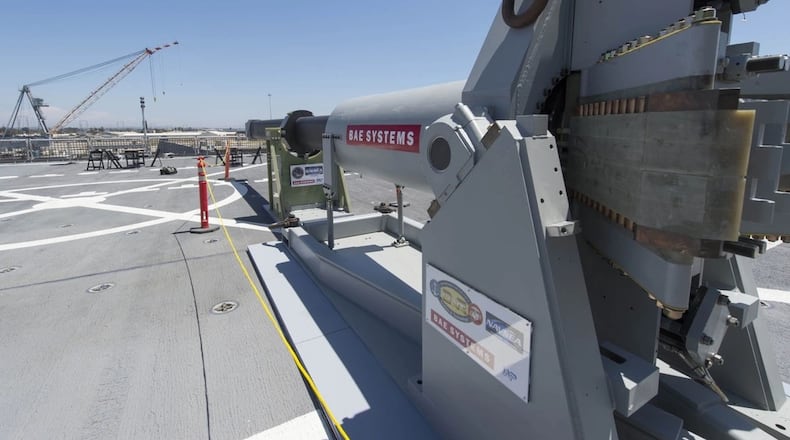The system would use ammunition developed for an former Navy electromagnetic railgun. The Navy program was ended in 2022.
“The MDAC seeks to significantly reduce munition costs and enhance expeditionary utility by developing a 155-mm artillery cannon-based air defense system capable of firing Hypervelocity projectiles (HVP)s, integrated into a wheeled platform,” the Army said in its overview of the project.
A military “request for information” is an inquiry for written information about the capabilities of interested suppliers.
As developed by the Navy, the gun was meant to deliver hypervelocity projectiles to support Marines, ground forces and ships.
IAP Research, based in Dayton, had been a key subcontractor for more than 10 years in the Navy’s development of the railgun. In 2017, BAE Systems acquired IAP Research, which at the time had about 40 local employees.
As early as the summer of 1987, IAP demonstrated that the railgun could be loaded and fired at a rate of 10 shots per second, the Dayton Daily News reported in December 1987.
IAP had to test the railgun at Eglin Air Force Base in Florida because more electric power was available there, John Barber, then-IAP president, told the Dayton Daily News at the time.
Had they tried to test the weapon in the Dayton area, “You would have to shut down substations all over Dayton,” Barber told the newspaper.
The railgun turned heads with a 2010 test shot at the Naval Surface Warfare Center in Dahlgren, Va., with the railgun firing a 23-pound test projectile at speed of 1.5 miles per second, the company said.
The railgun is designed to use electromgnetic fields instead of gunpowder. It was built for the Office of Naval Research.
BAE Systems has (or has had) offices in Riverside, Kettering and Fairborn. A message was sent to a company representative.
About the Author

